One Million Mutant Minerals
2024
About dams, water towers and climate change.
Text by Davide S. Sapienza
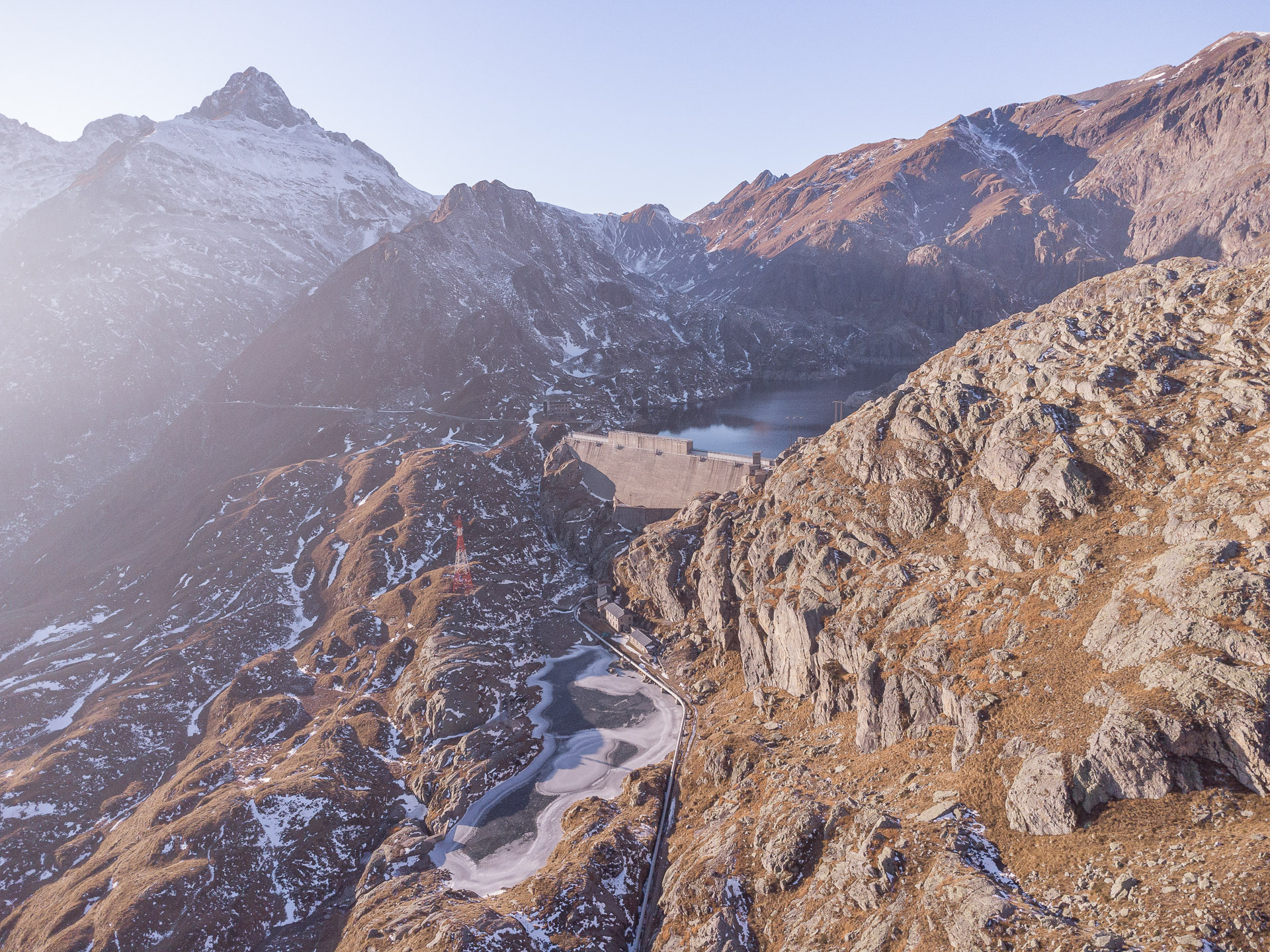
In Europe we have built over one million dams in 150 years that changed the mountain landscapes and our history. This provided civilization the “human right” to electricity, while in the process eroding the very fabric of our relationship with the land at its wildest.
To appreciate dammings keeping a sort of candour has let us peer into the ingenuity that brought to this.
As mountain dwellers and explorers of the “Earth
writing” (as the Greeks dened Geography), we are aware of the many glaciers that paid a price to this practice, a symbol of the Industrial Age,
the same that spurred the current climate crisis, in turn eating our glaciers alive. Most of our dams were built in the proximity of glaciers. Their melting water is a breathtaking experience. It connects to Mother Earth in ways hard to describe.
Somehow the network of dams, like in Valgoglio,
Orobie Alps, conjure a sense of magic for a process created by a “simple”, yet complex, technology. Walling in the heart of the mountains is an insight into who we are, what we do, and our relationship with the
Earth o erings. Our respect for her. Insights that do not eschew the awareness of their criticality.
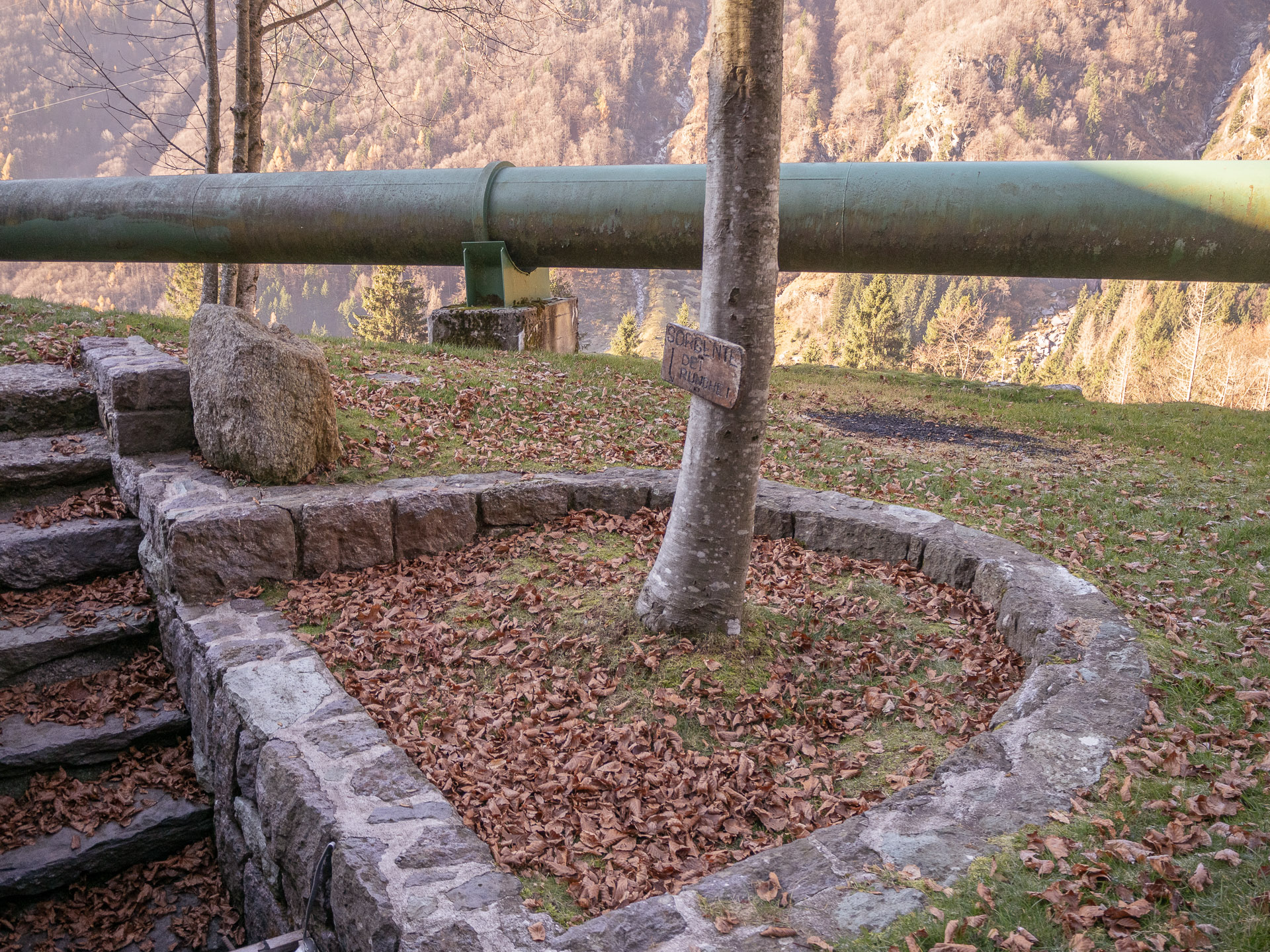
Valgoglio valley is dotted with many small natural water springs. Often stated by a sign, like pictured above.
On approaching, the fatigue of a long hike strips down a judgemental attitude. We see more of what things are for what they represent; we can not avoid feeling the reciprocity we are experiencing, as if walking back in time. The more geography gets to you, the more you think how similar is their nature to glaciers,
creatures that attracted human attention and lured us into the timefulness, the geological history of Earth.
We have the chance to light up our imagination and understand that there must be a future where we take a step back, to make two forward as from the point of
view of mineralogy, ice is a mineral; the accumulation of layers of this mineral – snow – is similar to sedimentary rocks. Rocks from the mountains were used to build dams. A geopoetic approach to absorb a place’s genius loci.
There is something familiar with these infrastructures , and even beauty. As if dams were alive and could understand – like Androids – that they might become something else. A cautoniary narrative? We do not know. We just keep coming back. And wonder.
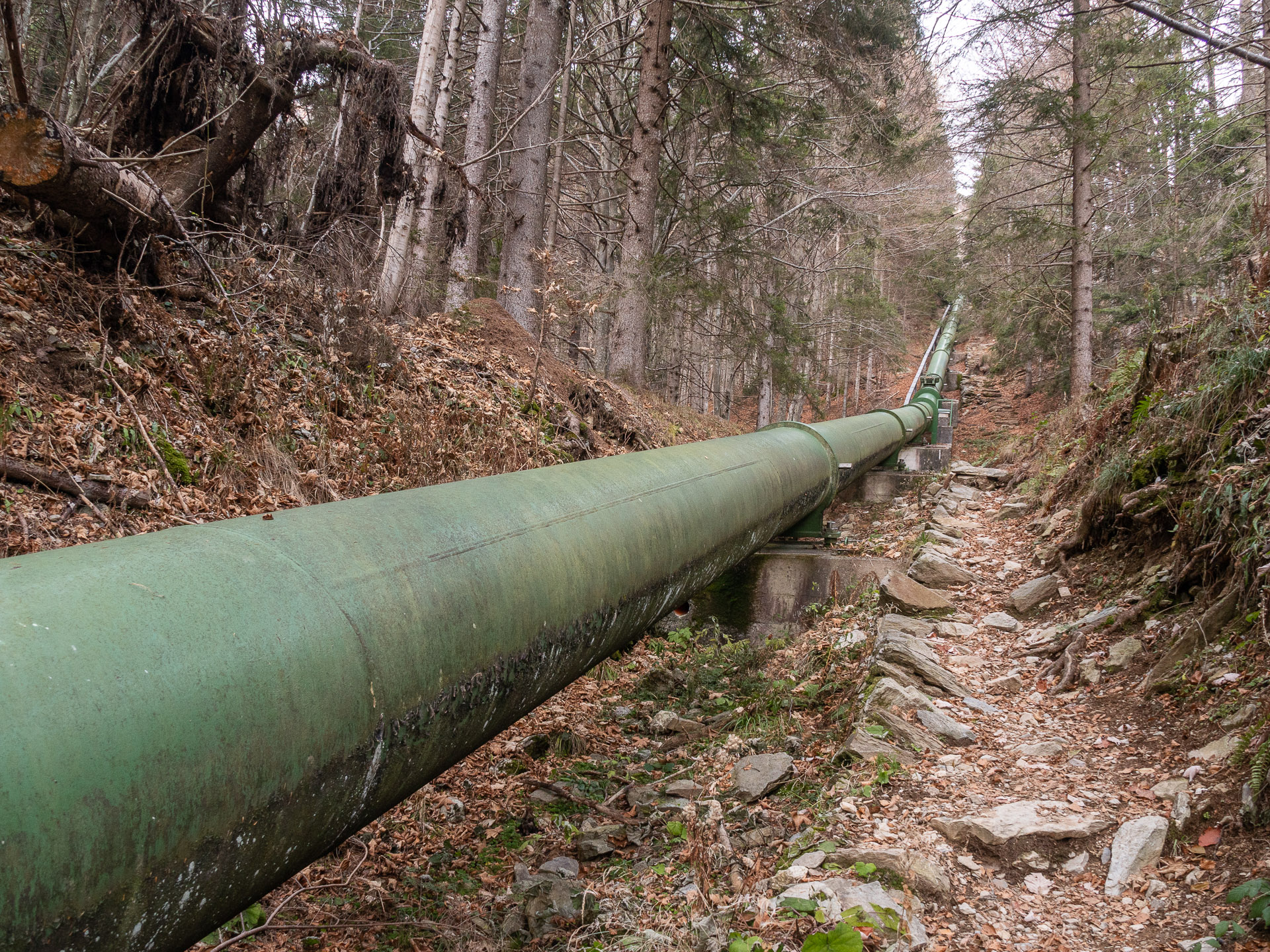
The water pipeline seen in the woods.
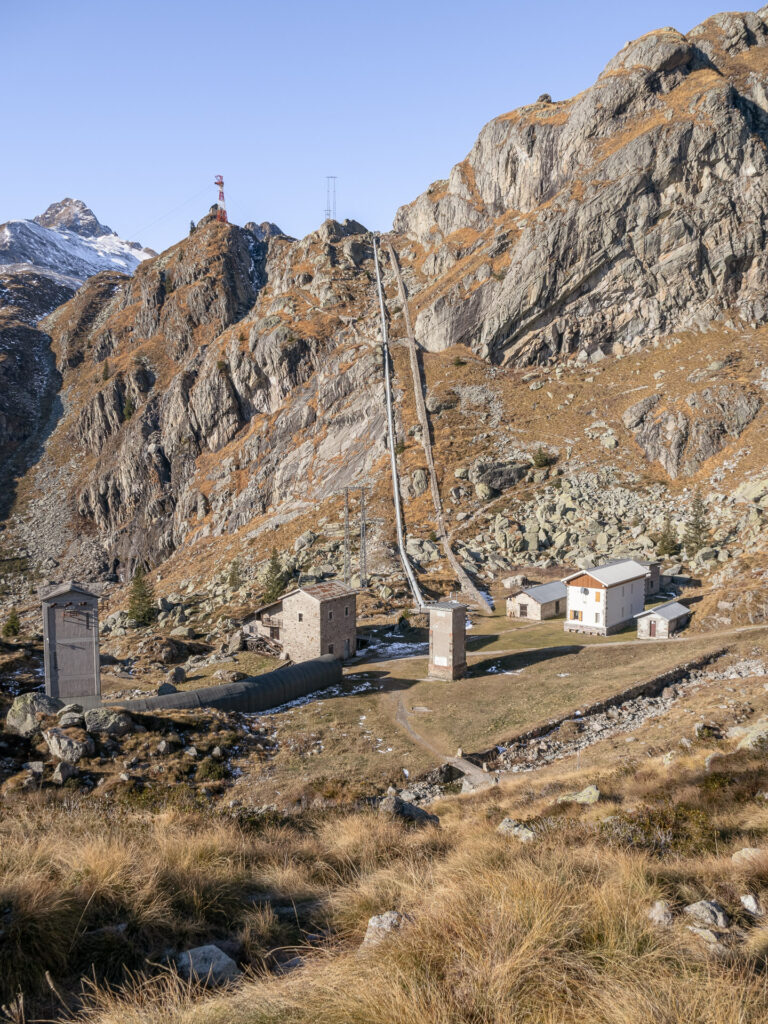
Enel’s Village, just below the dams.
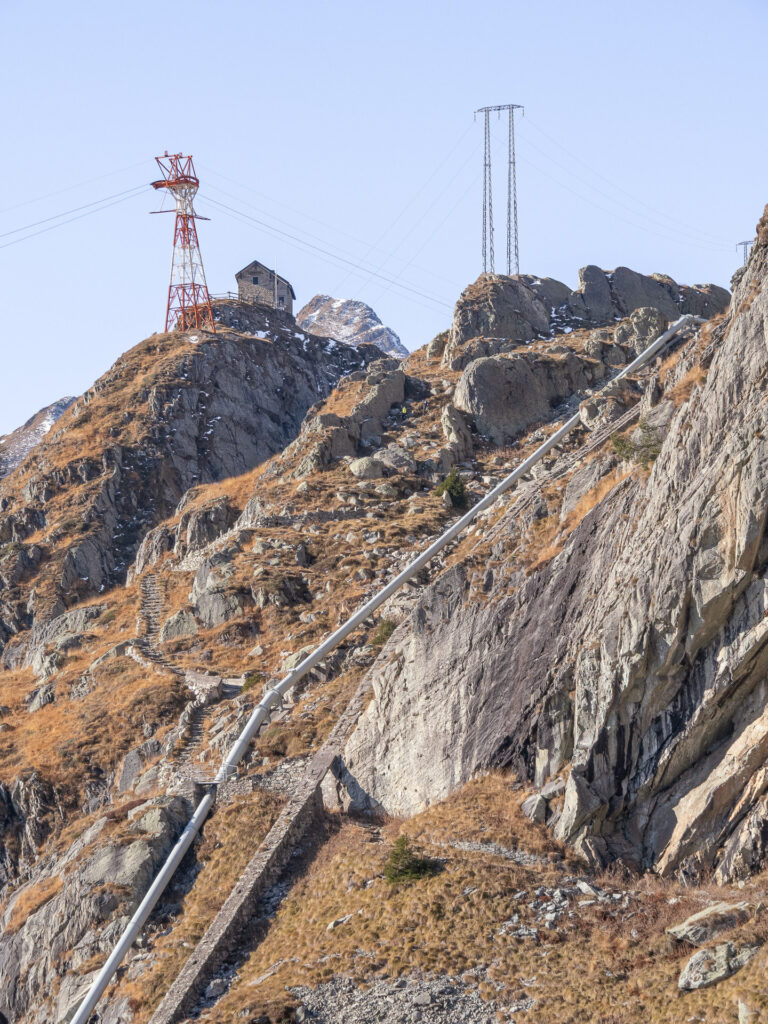
The vertifcality of the water pipeline.
Seen on top is Capanna Giulia Maria which, together with
Capanna Lago Nero and Baita Cernello, show how these places
have also become an attraction for hikers.
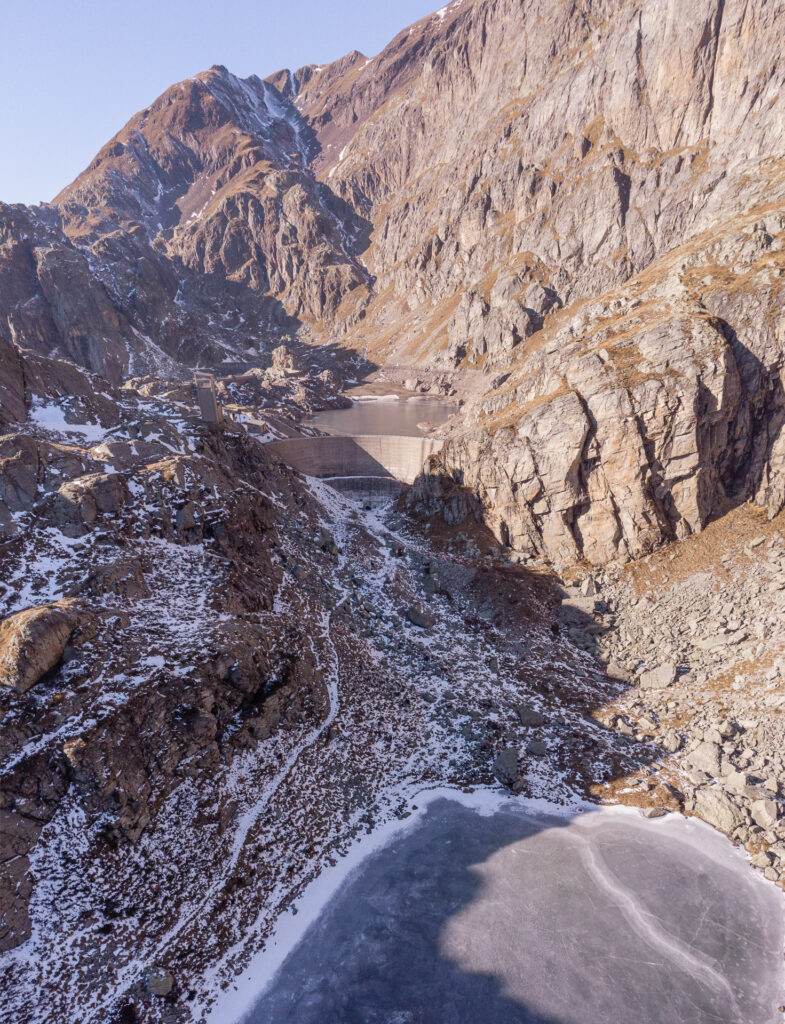
Lake Campelli Basso (m.2020) natural and without dams,
and Lake Campelli Alto (m.2050) of arti cial origin. The
stark environment and low-sun location below the
southern face of Mount Cabianca, which at 2601 meters
towers over the area, allow these two bodies of water to
remain frozen until late May.
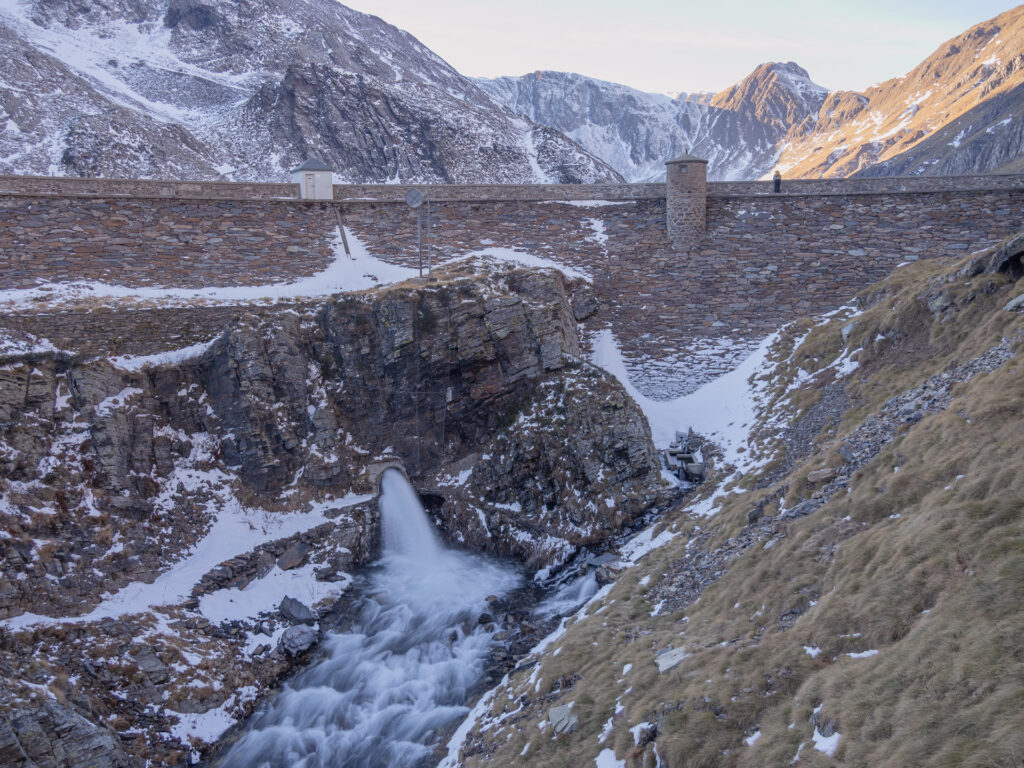
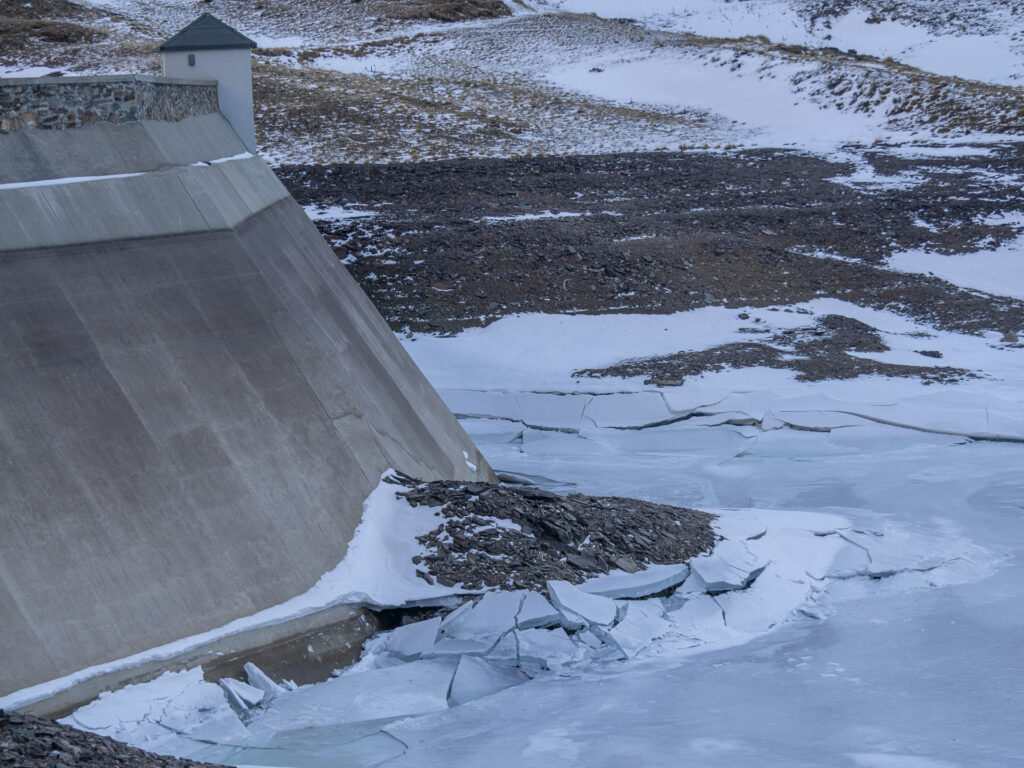
- Aviasco Lake Dam. The waters cover more than 70 thousand square meters: the oldest dam in the entire area. When the downstream water pipeline is opened, the roar is suggestive.
2. Ice seen at Aviasco lake.
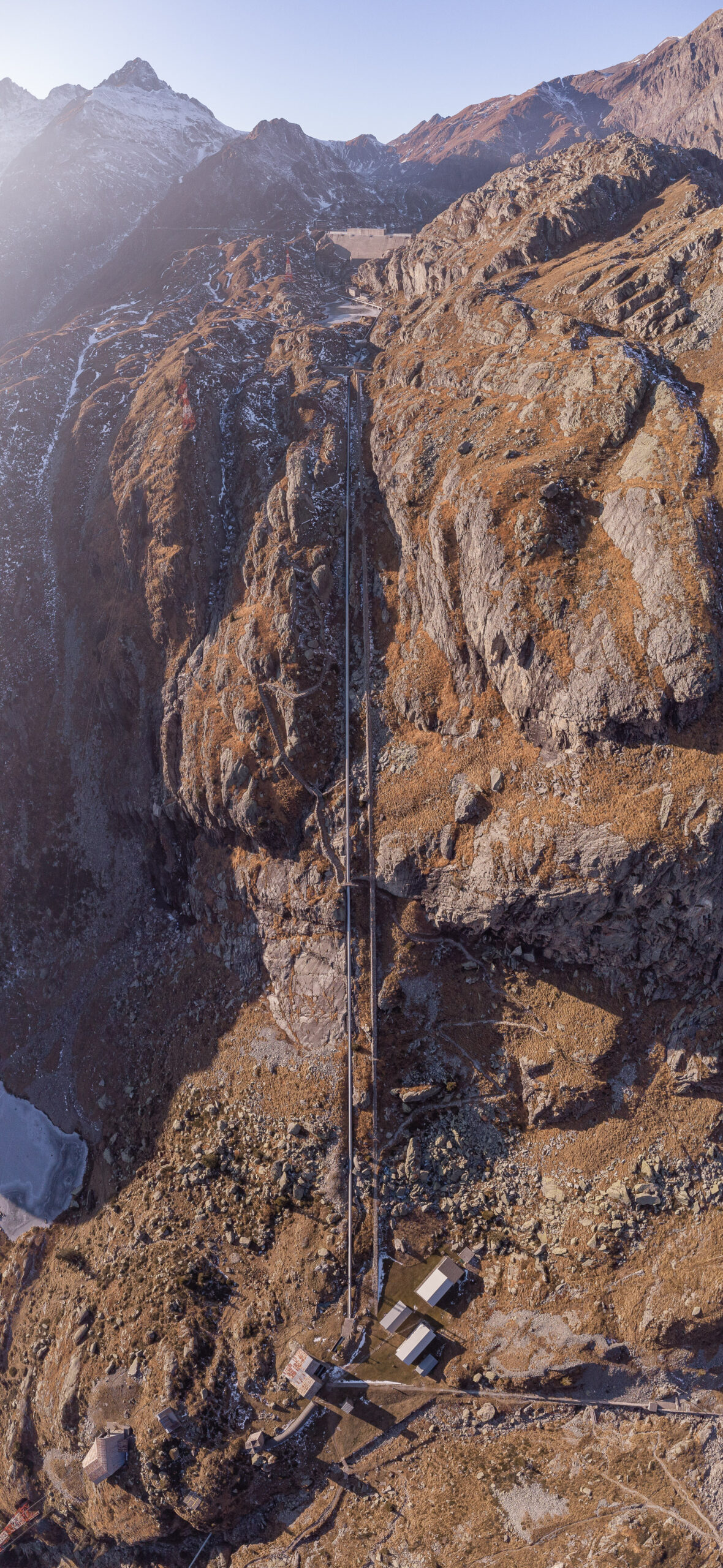
The verticality of the water pipeline going from Nero Lake to Enel’s village.
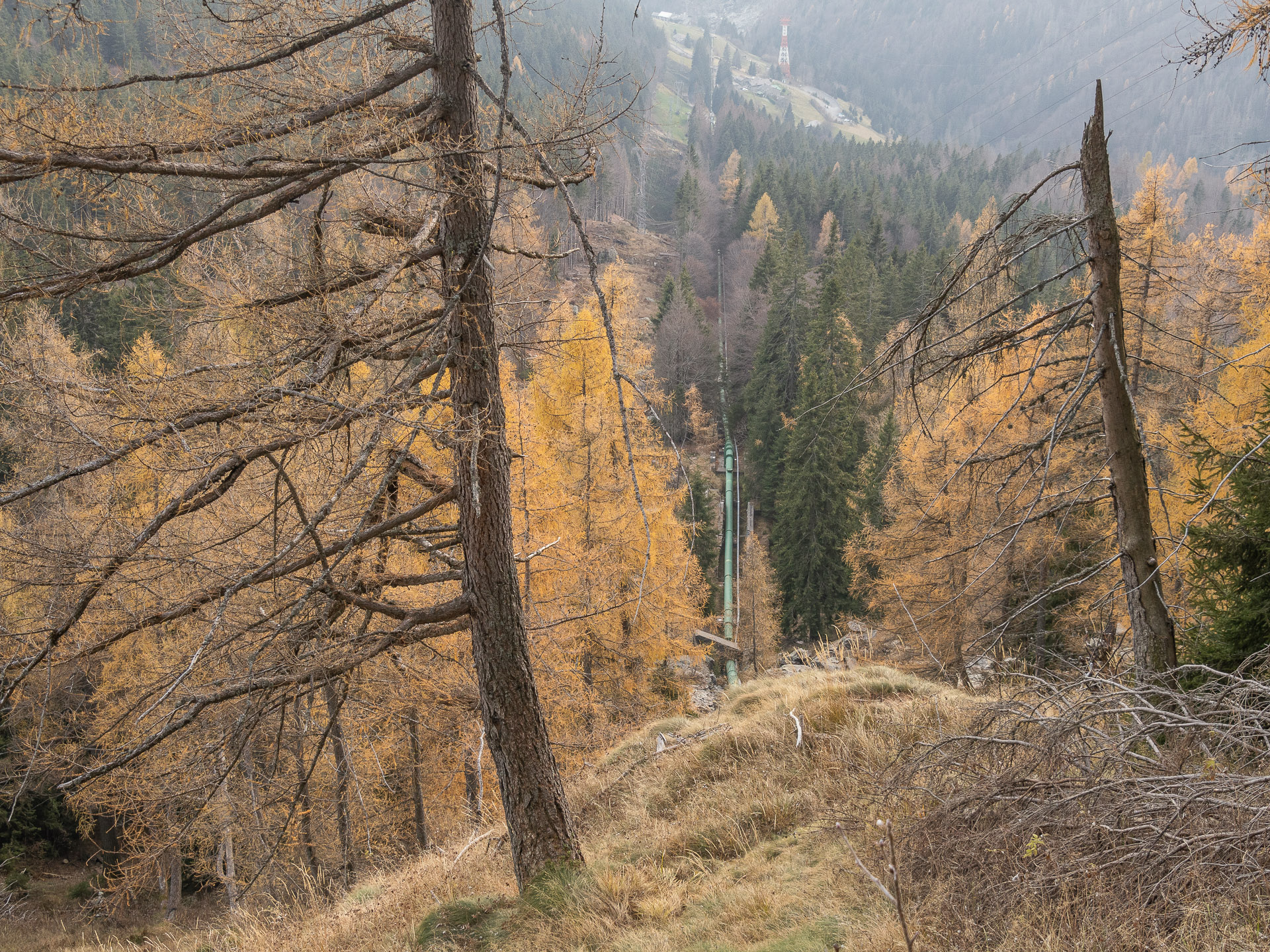
Water pipeline going downstream through the woods to the Aviasco power plant.
